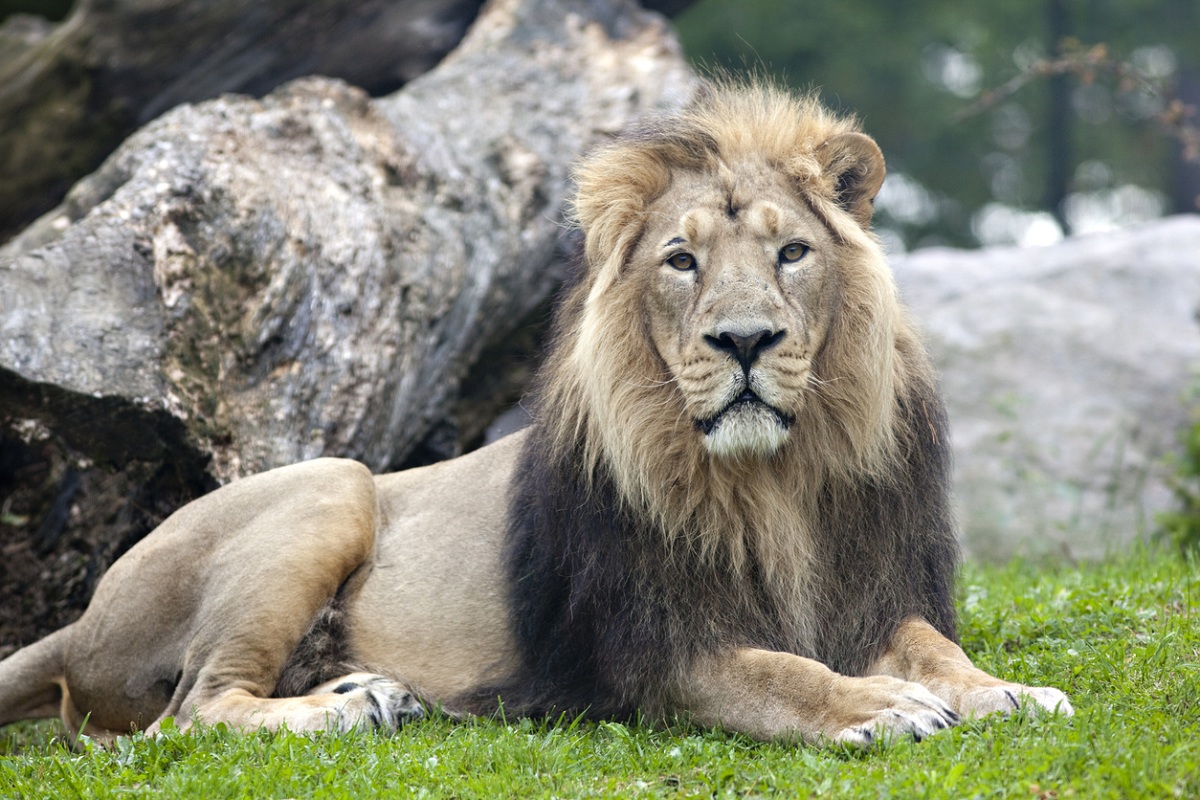Significance of lions being spotted in Gujarat’s Jasdan area
Abstract: Leaving their known habitat in Dhari in Gir (east) wildlife division in Amreli district, three Asiatic lions, which are a female and two sub-adult males, have walked around 100 km to reach Jasdan taluka of Rajkot district and have been camping in a grassland and revenue areas of Jasdan for a week now. This is for the second year in a row that lions have visited Jasdan. A look at the implications of the development.
Introduction: The Asiatic lions (Panthera lio persica) usually consist a group of lionesses, cubs, sub-adults and one, or in some cases two, dominant male lions. The male lions live within their established territory and fiercely protect them from rival male lions or intruders. Lionesses also live within such established territory and mate with the dominant male controlling that territory.
While male lions protect females and try expand their territory, females hunt and feed cubs. The dominant male lions also mostly rely on females for hunting though they often assist their pride in making a kill. As sub-adult males approach adulthood, dominant males see them as challengers and therefore push them out of the pride. Such lone males become nomads, in search of pride and territory.
Sometimes, two such nomad males form an alliance and attempt to overtake a pride by overpowering its dominant male and driving him out of the territory. Often such males in search of pride and territory explore new areas outside established habitat of the species. Thus, being territorial animals, as populations of lions grow, the big cats start dispersing from their regular habitat.
Body:
Asiatic lions living in Gir and other protected areas of Saurashtra region of Gujarat are world’s only wild population of lions outside Africa. the Cat Specialist Group of the International Union for Conservation of Nature has recently clubbed the pathera leo persica with central and west African lions (penthera leo leo) while revising the taxanomy of the Felidae.
Their historic range included west Asia, the Middle East and east-central India. But due to rampant hunting and habitat loss, their population is believed to have shrunken to a few dozen individuals only restricted to the Gir forest in Saurashtra region by the beginning of the 20th century.
Although, thanks to conservation efforts of the ruler of erstwhile princely state of Junagadh and later on by the Gujarat forest department, lion population has been rising for the last four decades and touched 674.
As their population increased, the lions first dispersed towards Sutrapada and Kodinar coast and then recaptured the Girnar forest overlooking the Junagadh city in 1980s. In 1990s, lions started dispersing from the Gir (east) wildlife division, along the banks of Shetrunji river in Amreli, reclaiming their territories in Paniya and Mitiyala protected forests as well as roaming in revenue areas Krakach in Liliya and thickets of Acacia Juliflora (locally called gando baval) in coastal Rajula and Jafrabad talukas.
Moving further along the Shetrunji river, lions settled in Bhavnagar in early 2000s. From the western periphery of the Gir forest, lions have extended their territory towards Maliya and up to Mangrol. They are now sighted often in Madhavpur village of Porbandar also.
Dispersing from the Gir National Park and Wildlife Sanctuary (NGPWLS), lions have dispersed and have since settled and created meta-populations in Girnar Widlife Sanctuary, Paniya Sanctuary, Mitiyala Sanctuary, revenue area of Krakach in Liliya taluka and coastal Rajula and Jafrabad talukas of Amreli, Sutrapada-Kodinar coast in Gir Somnath district, Ranigala-Jesar in Bhavnagar district and Mangrol coast of Junagadh. Lions keep moving from these areas to Gir, creating what is called lion corridors. Lions have strayed as far away as Botad and Jamnagar districts but they were one-off incidents.
But their Jasdan visit differs for the fact that it is second year in a row, that too around same time of the year. In November 2019, two male lions, believed to be from Babra in Amreli, had visited Jasdan and Vinchhiyata talukas of Rajkot before moving further north to Chitla in Surendranagar district. However, they had returned to Girnar Wildlife Sanctuary after around five months. Also, Jasdan is not connected to Amreli by any contiguous riverine patch associated with corridors like Krakach. But the lions which created meta populations initially used to visit those areas for some time and would return to Gir before adopting those newer areas as their homes.
Lions are considered top predators of grassland and shrubland ecosystems. Jasdan, Vinchhiya and Chotila talukas have grasslands, both private as well as in protected forest areas. Hingolgadh Nature Education Sanctuary and Umat Vidi, both in Vinchhiya talukas have the potential to host a few lions, forest officers say.
These areas also have a growing population of blue bulls as well as wild boars, which are prey of lions. Traditional grazing grounds in these areas also make the ecology similar to Gir and surrounding areas. However, as the area is on the ridge of the Saurashtra plateau, natural waterholes run dry in summer, making life difficult for wild animals. Nonetheless, the grasslands in Chotila is home to a few leopards.
Lions are believed to have vanished from Jasdan-Chotila around 150 years ago and present generation of humans have lived without presence of any large carnivore. If the lions eventually settle in this area, people may require to make some adaptations to mitigate conflict with the carnivores.
Also, the Surendranagar territorial forest division has continued the scheme of subsidising construction of parapet on wells in this area in order to secure the wells and prevent deaths of lions by falling in them accidentally. Forest department also pays compensation for any loss of livestock to the carnivores. Unless provoked, lions rarely attack humans.


Comments
Post a Comment